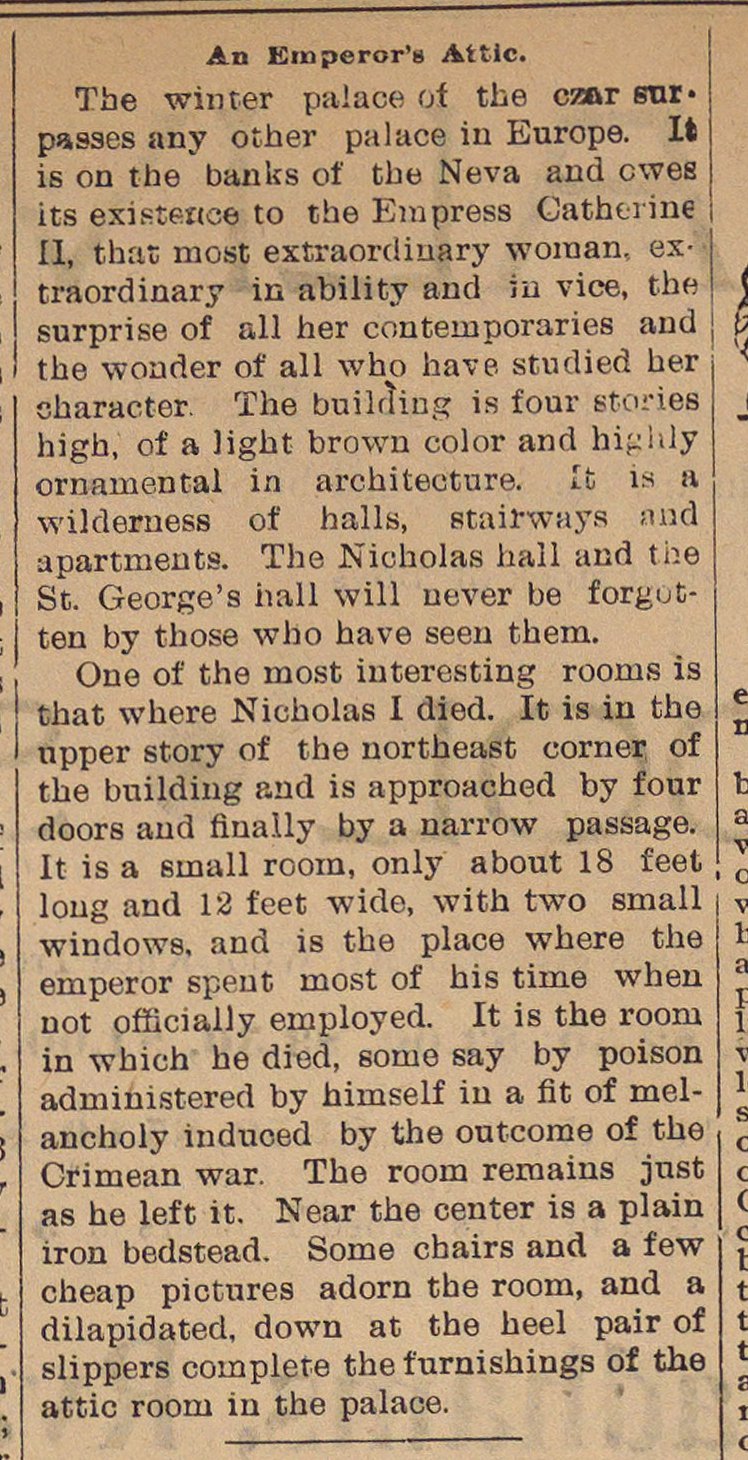An Emperor's Attic

An Emperor's Attic
The winter palace of the czar surpasses any other palace in Europe. It is on the banks of the Neva and owes its existence to the Empress Catherine II, that most extraordinary woman, extraordinary in ability and in vice, the surprise of all her contemporaries and the wonder of all who have studied her character. The building is four stories high, of a light brown color and highly ornamental in architecture, It is a wilderness of halls, stairways and apartments. The Nicholas hall and the St. George's hall will never be forgotten by those who have seen them.
One of the most interesting rooms is that where Nicholas I died. It is in the upper story of the northeast corner of the building and is approached by four doors and finally by a narrow passage. It is a small room, only about 18 feet long and 12 feet wide, with two small windows, and is the place where the emperor spent most of his time when not officially employed. It is the room in which he died, some say by poison administered by himself in a fit of melancholy induced by the outcome of the Crimean war. The room remains just as he left it. Near the center is a plain iron bedstead. Some chairs and a few cheap pictures adorn the room, and a dilapidated, down at the heel pair of slippers complete the furnishings of the attic room in the palace.
Article
Subjects
Old News
Ann Arbor Argus-Democrat